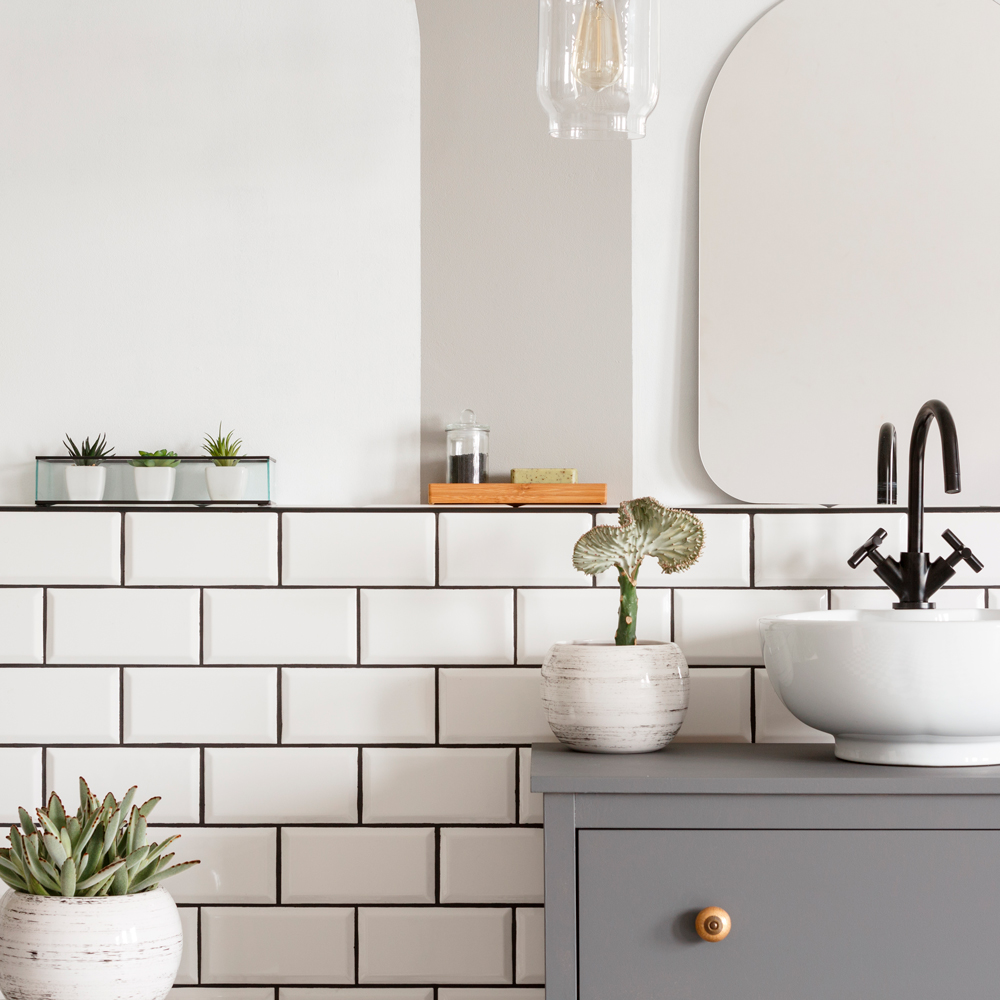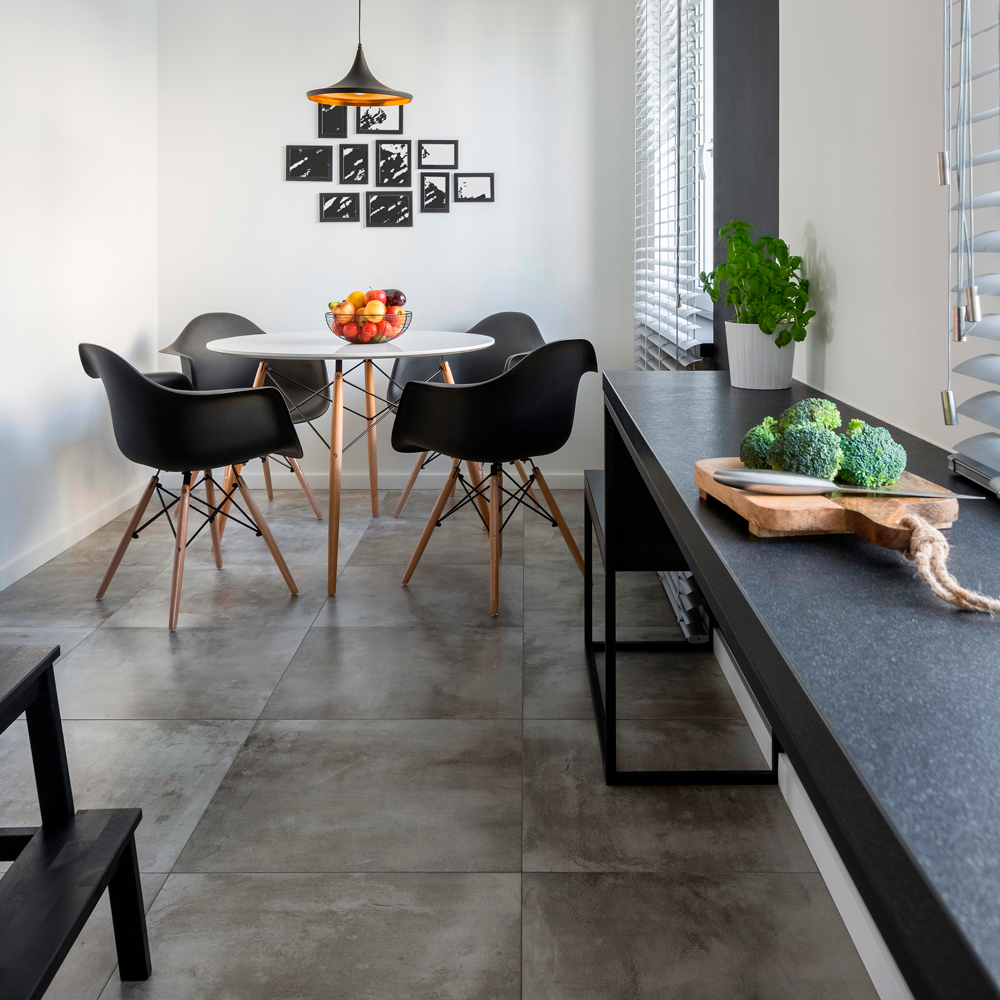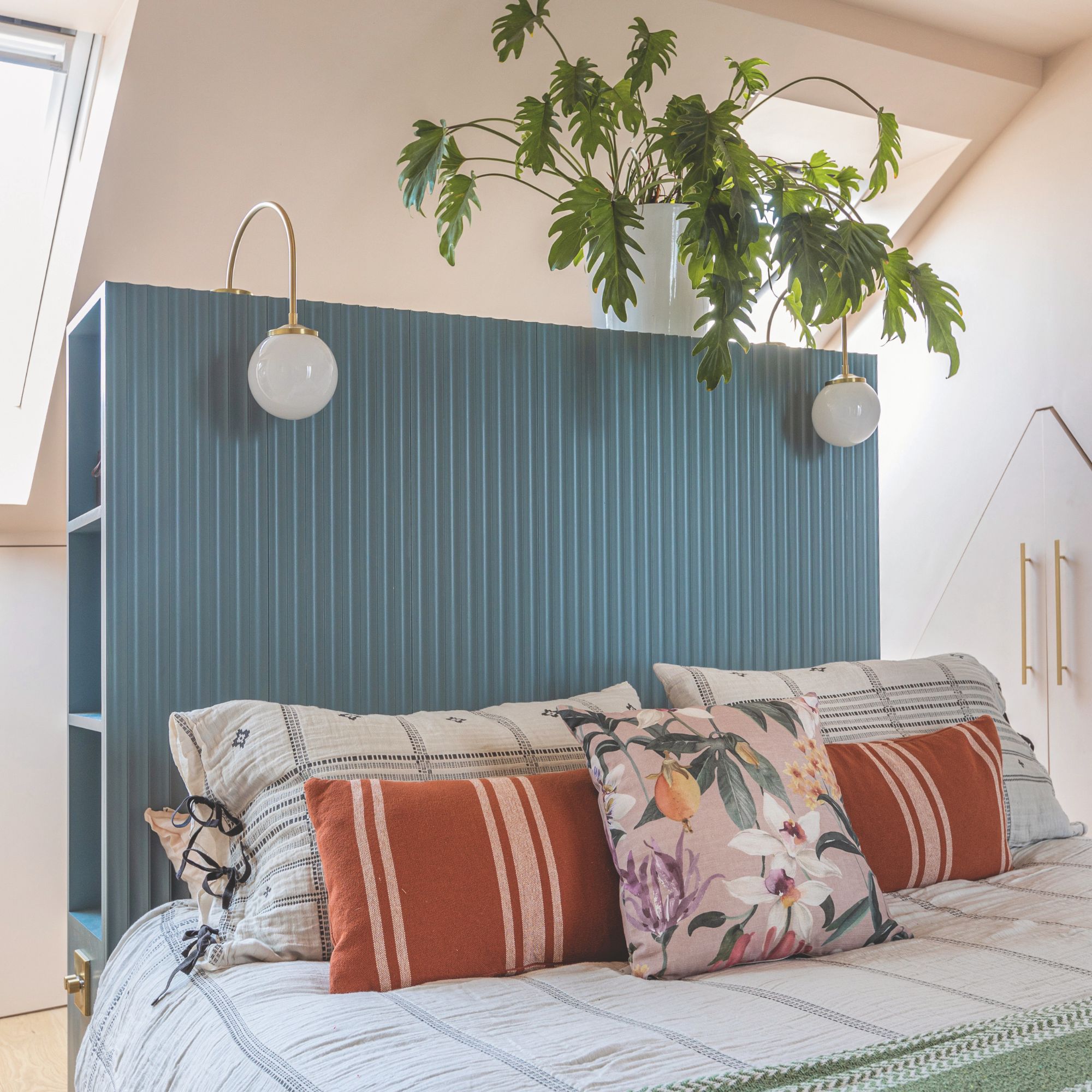The reasons why good grout is key when it comes to perfecting a tiling scheme
Promotional feature with Saint-Gobain Weber

When it comes to creating fabulous tiling, it's as much about the grouting as it is about the tiles themselves. An essential for all tiling projects – be it a colourful solution to make a statement with a kitchen splashback or a subtle bonding for durable floor tiles in a hallway – grout is so much more than mere filler.
As the bond that holds the whole tiling scheme together, tile grout can not only ensure your tiling withstands the test of time, it can also add colour to enhance the look of your bathroom, kitchen or hallway.
For a masterclass in good grouting we asked the experts at Weber for the things to consider when grouting your tiles.
What should home owners look for in a good grout?
One of the most important considerations when sourcing grout is determining what purpose it stands to serve. In bathrooms and kitchens water and heat resistance is key – because if the grout isn't up to the job it won't last.
Will it stand the test of time or will it need to be replaced? The simple answers is yes, a good quality grout is highly-durable and therefore will last for years to come, meaning it won't require replacing.
How will grout hold up against spillages and mould? 'The weberjoint premium wall and floor tile grout with PURE CLEAN Anti-Stain Technology contains special additives that repels dirt from the surface,' explain the experts.
This quality makes it ideal for a kitchen scheme as this unique feature reduces the appearance of patchiness and greatly improves resistance to staining and discolouration. Mould Stop Technology offers lasting protection from mould growth, making it a great choice for rooms with lots of moisture such as bathrooms, kitchens, boot rooms and porches.
When considering the colour, look for a grout that offers versatility. The weberjoint premium grout is available in 18 colours, including browns and greys that have been specifically chosen to complement wood effect flooring tiles. Together with matching Weber silicones they achieve a consistent finish and a smart aesthetic.
Using an alternative coloured grout to that of your tiles can help to make a style statement. In this bathroom (above), classic white Metro tiles are given a contemporary edge thanks to the addition of weberjoint premium grout in black. The result is an effortlessly chic monochrome vibe.
What happens if you get grout wrong?
'Leaky tiles can occur anywhere where water is used, whether it’s a shower, a wet room or a kitchen splashback,' warn the experts at Weber. 'Leaky tiles often cause damp and mould within surfaces behind tiles which damages the tile adhesive and can even threaten the structural integrity of walls.'
If your existing grout is visibly cracked or crumbling, it's likely water is getting behind the tiles and causing unseen damage, that by the time it becomes apparent could be costly to repair. Once there's water damage the chance of tiles becoming loose is much more likely, and it's possible they might fall off the wall altogether.
'As a last resort you may need to remove the tiles in order to fix any leaks. To give your walls (and your tiles) the correct protection, it’s a good idea to use an under tile tanking kit. This is a waterproofing system specifically designed for use in bathrooms and wet rooms.'

Weber expert tips for applying grout:
- Before applying new grout, ensure tiles are firmly adhered and gaps in between are clean.
- A squeegee or rubber float can then be used to apply water-resistant grout in small sections. Ensure a smooth, even finish is created with no gaps which could cause further problems down the line.
- Remove excess grout from tile surfaces as soon as possible, and then leave to dry for around half an hour. Finally, a damp emulsifying pad or sponge can be used to clean any remaining grout residue from the tile surface.

This slate-style tiled bathroom uses weberjoint premium grey grout to match the highlighted tones running through the tile design. The result is a subtle yet effective contrast to add depth to the look.
Top tips for choosing grout tiling colours
- Choose a contrasting colour to highlight the pattern of your tiles
- Use lighter colours to blend your overall design seamlessly
- Pick darker colours to create a more dramatic effect
See for yourself the amazing benefits of PURE CLEAN Anti-Stain Technology in weberjoint premium grout:
Now you're all set to start your own DIY tiling project.
Get the Ideal Home Newsletter
Sign up to our newsletter for style and decor inspiration, house makeovers, project advice and more.
Tamara was Ideal Home's Digital Editor before joining the Woman & Home team in 2022. She has spent the last 15 years working with the style teams at Country Homes & Interiors and Ideal Home, both now at Future PLC. It’s with these award wining interiors teams that she's honed her skills and passion for shopping, styling and writing. Tamara is always ahead of the curve when it comes to interiors trends – and is great at seeking out designer dupes on the high street.
-
 5 signs you’ve taken decluttering too far — and how you can pull yourself back, according to organisation experts
5 signs you’ve taken decluttering too far — and how you can pull yourself back, according to organisation expertsYou might have to start resisting the urge to purge
By Lauren Bradbury
-
 What is the Party Wall Act 3m rule and is it something you should be worried about? This is what the experts say
What is the Party Wall Act 3m rule and is it something you should be worried about? This is what the experts sayDon't get caught off-guard by the Party Wall Act 3m rule — our expert guide is a must-read
By Natasha Brinsmead
-
 Shoppers can’t get enough of The Range’s lemon tree, but I’ve found an even cheaper bestseller at B&Q - it’s perfect for a Mediterranean look
Shoppers can’t get enough of The Range’s lemon tree, but I’ve found an even cheaper bestseller at B&Q - it’s perfect for a Mediterranean lookWelcome the summer with this glorious fruit tree
By Kezia Reynolds
